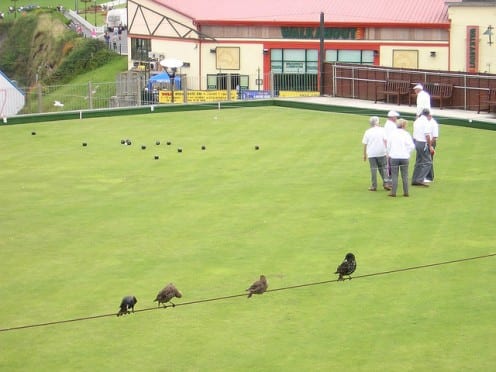How ‘English’ is social media?
By Daniel Miller, on 1 August 2013

Image by notfrancois (Creative Commons)
Many of the pioneers of social anthropology such as Malinowski and Radcliffe-Brown worked from England, and helped define the discipline as the study of the ‘other’. This is probably one of the reasons why there has been some neglect with respect to the anthropology of Englishness. Certainly there are research projects based in the UK, but many of them deal with topics such as English racism or specific issues such as class or gender. So the levels of generalisation that might be made about groups such as The Nuer or The Trobriand Islanders are rarely attempted here. It took something of a maverick in the form of Kate Fox to more directly address the issue in her hilarious and insightful book Watching the English.
But if I want my study of social media to be directly on a par with all the others, I must then address the question of ‘How English is Social Media in England?’ This means also thinking about wider questions of how The English have more traditionally created patterns of sociality and communication. As it happens my fieldsite which, from now on, I propose to call The Glades shocked me in that although it is not far from the highly cosmopolitan and multicultural world of London, it has only around a 1.5% migrant population, making it highly and homogenously English. So even if this hadn’t been the plan I would perforce be studying Englishness. Kate Fox who is consummately English used that very trait to create her work. She tackles the topic with teasing humour and exaggeration and irony. For example she identifies as the core to her findings something she calls the English ‘social dis-ease’, that is their lack of ease with socialising. ‘It is our lack of ease, discomfort and incompetence in the field (minefield) of social interaction; our embarrassment, insularity, awkwardness, perverse obliqueness, emotional constipation, fear of intimacy and general inability to engage in a normal and straightforward fashion with other human beings’ (2004: 401).
For me this raises the question of how far the English use social media to resolve their dilemmas of trying to have communication while carefully preserving their autonomy and distance in order to keep away from embarrassment. Could social media be a form of reticence? Some evidence came from ethnographic encounters with commercial and service institutions. The idea of getting a balance right between involvement and autonomy seems to have become the key life skill in virtually everything. On one morning I listened to a church official talking about their use of social media. He was concerned whether it was appropriate for the church to text people because they might feel the church shouldn’t be intruding into their private lives. That afternoon I was talking with someone whose work is to market local businesses. His dilemma was that if you fail to engage with people, you cannot promote your business, while if you even once step over the boundary of accepted intrusion into customers’ lives, they will often never return. We were trying to ascertain if Facebook provided a useful modus vivendi in this regard. Even in the private domain we encountered people who saw Facebook is ideal for corresponding with neighbours down the street they live in. It was seen as equivalent to the chatting and gossip that occurs in the public domain, while within the comfort and isolation of one’s own private home. Indeed many of those who were most positive about Facebook legitimated it as, in many different ways, a ‘Goldilocks’ platform that is sociable but under such controls that it was not going to be personally or spatially intrusive (for an analogous case see Alana in my book Tales from Facebook).
A similar example would be students and others leaving the village and seeing Facebook as allowing sufficiency of retained contact while giving them space for growing autonomy, this pertained both to family and their ex-school friends. For still younger informants, platforms such as instagram and snapchat found niches within this frame. For example, snapchat indicated that very small tight group within which you demonstrated that you didn’t mind showing very embarrassing shots, though even these only because they are fleeting (the photos disappear within a few seconds). While instagram meant people could comment on photos without being particularly close. Polymedia, that is the range of platforms, may be giving people choices in degrees of closeness and distance. It is early days yet, but all of this suggests that my study must also become an anthropology of the Englishness of Social Media, and that this may well prove a key to understanding my data.
 Close
Close




